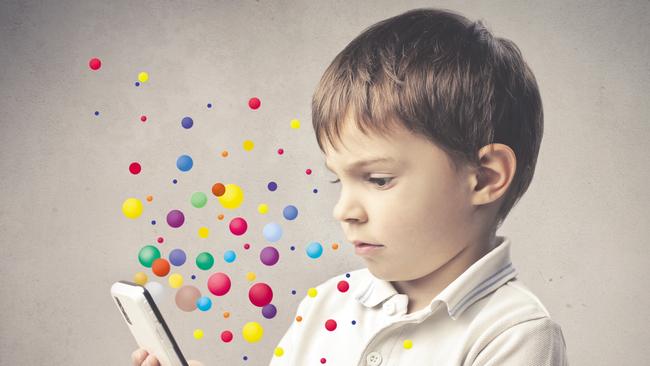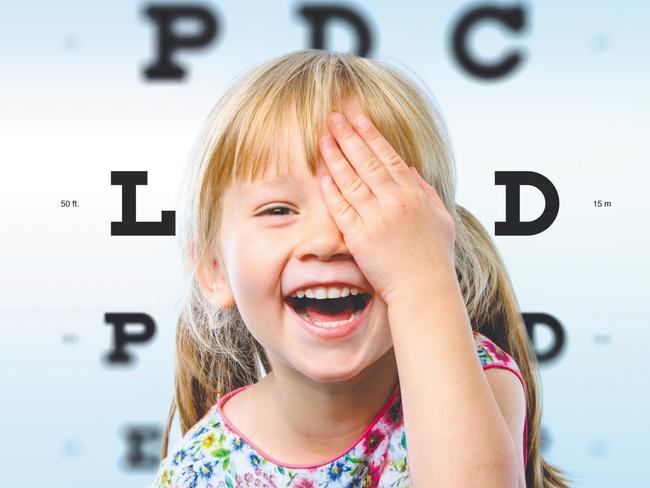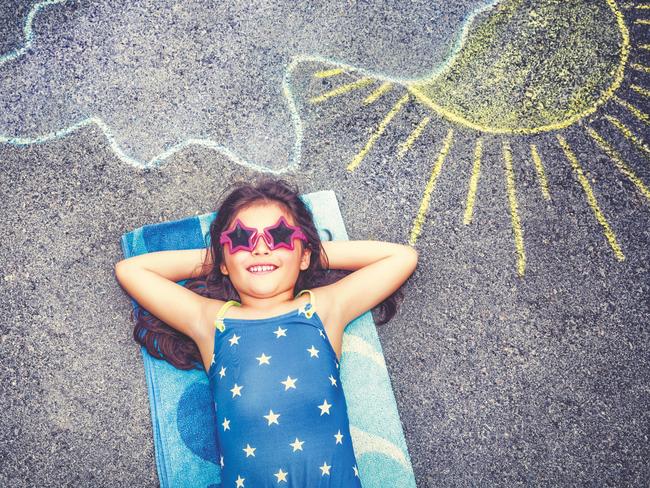5 ways to protect your kids’ eyes
CHILDREN love tablets and smartphones, but it’s contributing to a spike in short-sightedness, writes Liz Graham.

Body+Soul Daily
Don't miss out on the headlines from Body+Soul Daily. Followed categories will be added to My News.
Children love tablets and smartphones, but it’s contributing to a spike in short-sightedness.
They can calm a child in seconds and keep them entertained for hours.
Tablets and smartphones have become an essential kid-wrangling item for many car trips, restaurants, waiting rooms, you name it.
But there’s a catch: the more kids watch things up close on screens, the more they put their eyes in danger.
Short-sightedness (or myopia) is rising at an alarming rate in Australia — a recent study has shown that it now affects 19 per cent of 12-year-olds, which is almost double the amount in 2005.

And it’s estimated that 31 per cent of 17-year-olds also suffer from the condition.
“It’s the most important issue we’re facing in eye health,” Optometry Australia president Kate Gifford says.
Blurry eyes are on the rise
Myopia is blurry long-distance vision, and it’s usually identified in kids when they say they can’t read the blackboard at school, at which point the condition is quite advanced. It’s caused by the eyeball growing too quickly.

Also, “Myopia can increase the risk of other eye problems in adulthood, including cataracts and blindness,” Gifford says.
More than half of myopia cases are diagnosed between the ages of six and 15, with a second wave between 18 and 22.
Genetics play a role in a child’s risk but so does their visual environment. When a child is looking at something close to them, the muscles around and inside the eye adapt.
Too much time in this position makes them ‘stuck’, Gifford explains.
Switch off
Current guidelines recommend no more than an hour of screen time for littlies aged 2-5 and only two hours a day for kids 5-18.
Gifford recommends no screen time for kids less than 18 months old, and then curbing it as much as possible for those under 5.
“It’s essential to have a break every 20 minutes, to rest the eye,” she says.

She also says that watching TV is much more preferable. “Watching a screen more than three-metres away means that the eyes don’t have to work.”
Get them outside
It’s also just as important to think about how much “green time” — hours spent outdoors — your kids are getting. Why? When you’re outside and looking at things a good distance away, the eye is resting.
“It’s like putting down the weight it’s been holding when looking at a close screen,” Gifford says.
And being exposed to sunlight helps the eye grow at a normal rate.
A recent University of Sydney study of 2000 primary and secondary students found rates of myopia to be much lower in children of all ages who spent at least 90 minutes a day outdoors, even if they did a lot of close work (such as homework book reading) or screen time.
It’s good news for Aussie parents, Wei Wang, Professor of Public Health from the Edith Cowan University in Perth, says. “We’re lucky here, we have lots of green space and we already love sports.
“In China, there’s lots of pressure from parents and teachers to study, and there’s no talk of play.
We need to learn the lessons from Asia and change our behaviour,” he says.
The maximum fine parents in Taiwan can get if their child under 2 is seen with a tablet or smartphone, under new laws, is $1600.


